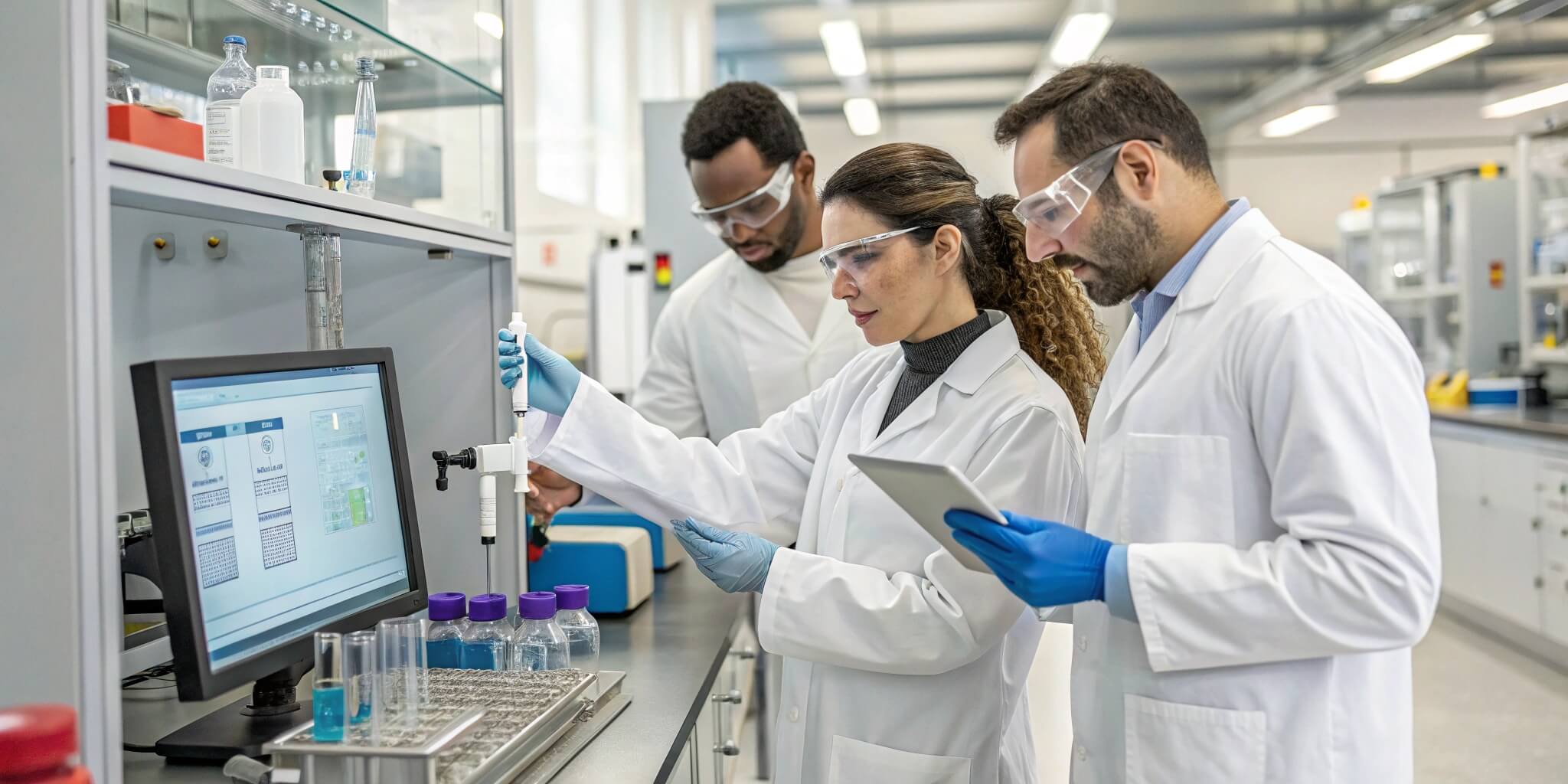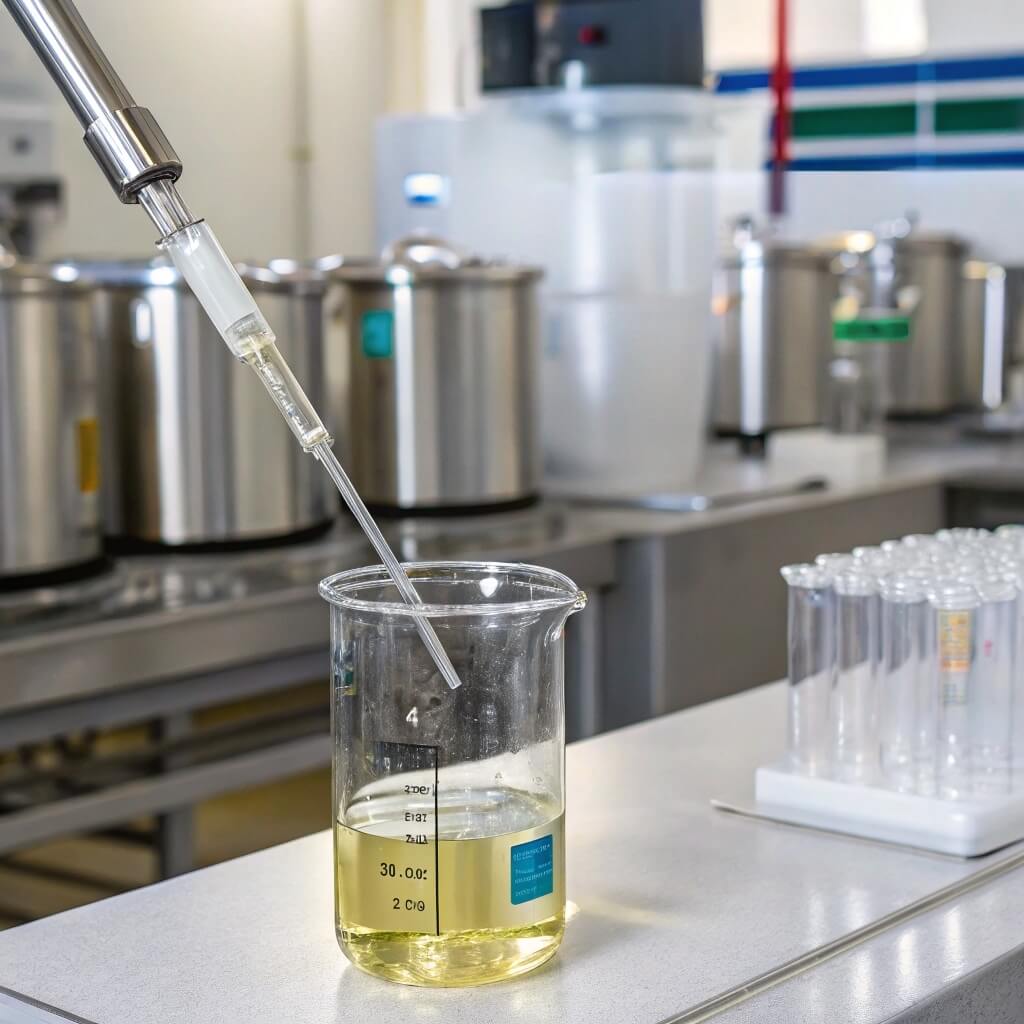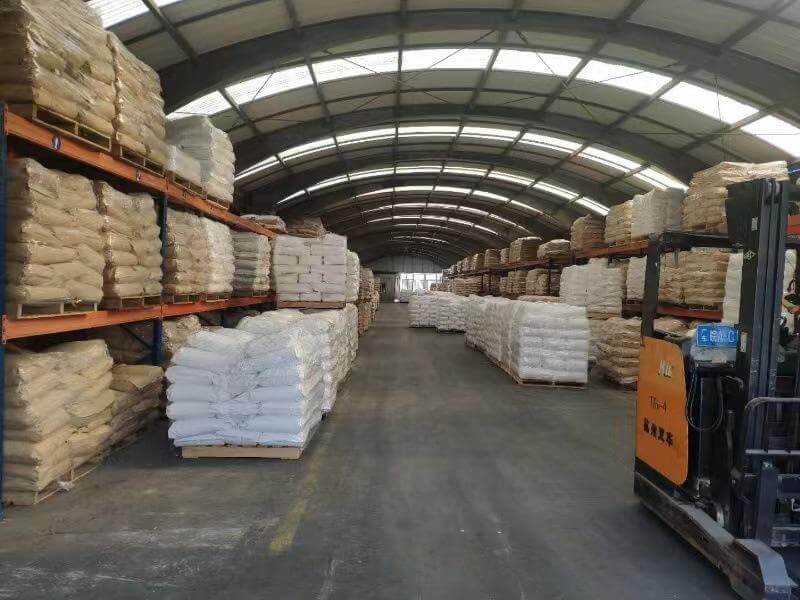مقدمة
نادرًا ما يأتي التميز في التصنيع مصادفةً، بل هو ثمرة هندسة دقيقة. يُعدّ هيدروكسي بروبيل ميثيل سلولوز (HPMC) مثالًا بارزًا على هذه الدقة، إذ يُعدّ حجر الأساس في صناعات مثل البناء والأدوية وإنتاج الأغذية. يُحوّل تعدد استخداماته الملحوظ الملاط العادي إلى مركبات متينة، ويُثبّت الأدوية لتعزيز فعاليتها، ويُحسّن قوام الطعام لتجارب طهي أفضل. تُبرز هذه النتائج ليس فقط قدرات HPMC، بل أيضًا خبرة وابتكار المُصنّعين وراء ابتكاره.
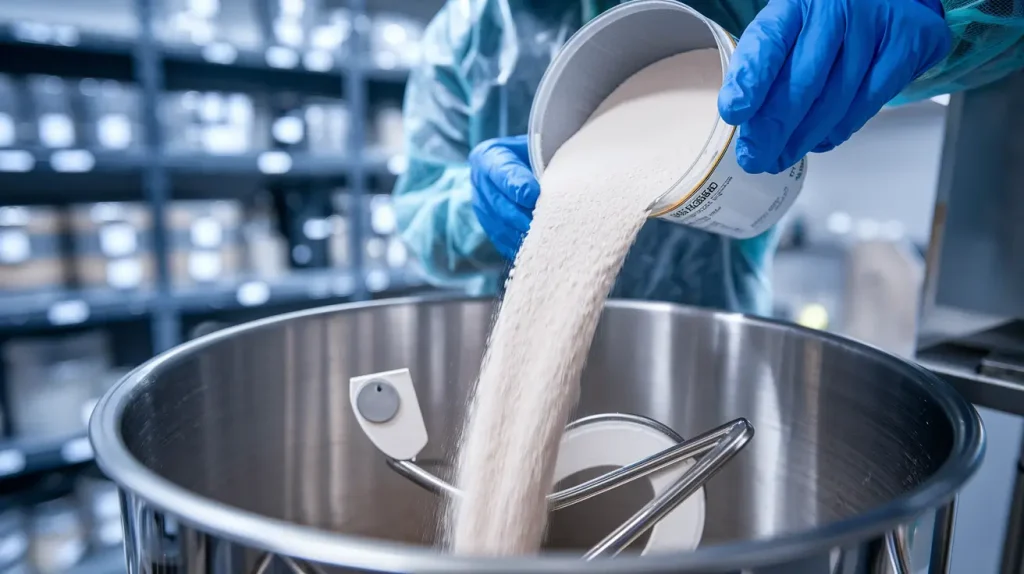
في عالم توريد HPMC، لا ينصب التركيز على الخيار الأرخص، بل على الشراكة مع موردين يُعطون الأولوية للجودة والاتساق والاستدامة. يتفوق رواد الصناعة بتجاوزهم حدود إنتاج إيثر السليلوز، مُعتمدين ممارسات صديقة للبيئة، ومُقدمين حلولاً مُصممة خصيصًا، ومُستفيدين من التقنيات المُتقدمة لتلبية احتياجات العملاء الفريدة.
يستكشف هذا البحث السمات المميزة لأبرز مصنعي HPMC، ويكشف كيف يُسهم ابتكارهم في دفع عجلة التقدم عبر مختلف الصناعات، ويُمكّن عملائهم من تحقيق النجاح. هل أنت مستعد لمعرفة ما يميزهم؟ تابع القراءة.
فهم HPMC: العمود الفقري للتطبيقات الحديثة
ما هو HPMC ولماذا هو مهم؟
هيدروكسي بروبيل ميثيل سلولوز (HPMC) هو بوليمر متعدد الاستخدامات، مشتق من النباتات، يتميز بخصائصه التحويلية. يجمع بين مجموعتي هيدروكسي بروبيل وميثوكسيل في هيكل أساسي من السليلوز، مما يُمكّن من احتباس الماء بشكل لا مثيل له، والتحكم في اللزوجة، والتماسك الحراري. هذا المزيج الفريد من الخصائص يجعل HPMC مكونًا أساسيًا في مختلف الصناعات، بما في ذلك البناء، والأدوية، وإنتاج الأغذية، وتطبيقات صناعية متنوعة. تتيح قدرته على التكيف للمصنعين تصميم حلول مُخصصة للتحديات المعقدة، مما يضمن أداءً ثابتًا وجودة منتجات فائقة. ولكن ما الذي يجعل HPMC لا غنى عنه حقًا؟ دعونا نستعرض فوائده الواسعة.
الفوائد الرئيسية لـ HPMC في الصناعات المختلفة
تتجاوز مزايا HPMC تعدد استخداماتها، فهي تُحسّن الأداء بشكل كبير في جميع الصناعات التي تُعنى بها. ففي قطاع البناء، تضمن احتباسًا مثاليًا للماء ولزوجة مُحسّنة، مما يُؤدي إلى مواد أقوى وأكثر قابلية للتشغيل. وفي الصناعات الدوائية وإنتاج الأغذية، تعمل كعامل ربط ومُثبّت موثوق، مما يضمن سلامة المنتج ووظائفه. أما في التطبيقات الصناعية، فتُساهم HPMC في الاستدامة من خلال تعزيز كفاءة المنتج وتقليل النفايات. وقد جعلت هذه المزايا HPMC حجر الزاوية في الابتكار والموثوقية في قطاع التصنيع الحديث. هل أنت مستعد لرؤية كيف تُحدث تحولًا في عمليات مُحددة؟ لنتعمق أكثر.
العناصر الأساسية لمصنع HPMC المتفوق
قدرات الإنتاج المتقدمة
يتطلب إنتاج هيدروكسي بروبيل ميثيل سلولوز (HPMC) عالي الجودة إتقان عملية دقيقة تشمل الاستبدال والتنقية والتجفيف. تتطلب هذه الخطوات دقةً وتقنيةً متطورةً لتحقيق الاتساق والأداء. يستطيع المصنعون ذوو المرافق المتطورة ضبط جميع جوانب الإنتاج بدقة، بدءًا من التحكم في مستويات الاستبدال ووصولًا إلى ضمان التوزيع الأمثل لحجم الجسيمات. تُعد هذه القدرات المتقدمة أساسيةً لتلبية المتطلبات المتنوعة للصناعات التي تعتمد على هيدروكسي بروبيل ميثيل سلولوز. ولكن ما الذي يميز الأفضل عن غيره؟ دعونا نستكشف تركيزهم الراسخ على الجودة.

الالتزام بمعايير الجودة
تتميز شركات تصنيع HPMC المتميزة بالتزامها الراسخ بشهادات عالمية مثل ISO وGMP. تعكس هذه المعايير التزامًا بالتميز، مما يضمن استيفاء المنتجات لمعايير نقاء وأداء صارمة. يمتد نطاق مراقبة الجودة ليشمل مراقبة المعايير الأساسية مثل درجات اللزوجة، وتوزيع حجم الجسيمات، ومحتوى المعادن الثقيلة، مما يضمن الموثوقية والسلامة في مختلف التطبيقات، من الأدوية إلى البناء. ومع ذلك، فإن الجودة ليست العامل الوحيد، فالابتكار يلعب دورًا بالغ الأهمية. كيف تحافظ الشركات المصنعة الرائدة على مكانتها الرائدة؟ تابع القراءة لاكتشاف استراتيجيات البحث والتطوير الخاصة بها.
الاستثمار في البحث والتطوير
الابتكار هو السمة المميزة لرواد الصناعة. تُولي كبرى الشركات المصنعة أولويةً للبحث والتطوير لتطوير حلول سليلوز مُعدّلة مُصممة خصيصًا لتحديات مُحددة. سواءً أكان ذلك يتعلق بإنتاج درجات مُخصصة من السليلوز عالي الأداء (HPMC) لمواد البناء عالية الأداء أو تركيبات صيدلانية ذات خصائص فريدة، فإن استثماراتها في البحث تُسهم في تحقيق تطورات تُميزها. ومن خلال ريادة الابتكار، تضمن هذه الشركات تلبية منتجاتها لاحتياجات السوق المُتغيرة وتقديم قيمة استثنائية. فماذا يعني هذا إذًا للصناعات التي تستفيد من السليلوز عالي الأداء؟ إن تداعياته تُغير قواعد اللعبة.
التنقل عبر سلسلة توريد HPMC
تحديد موردي HPMC الموثوق بهم
إن العثور على مورد موثوق لهيدروكسي بروبيل ميثيل السليلوز (HPMC) قد يُحدث فرقًا كبيرًا بين سلاسة العمليات وتكاليف الانقطاعات. تُوفر شهادات مثل ISO وGMP نقطة انطلاق فعّالة لتقييم الموردين، لكن الشركاء الأكثر موثوقية يبذلون جهودًا إضافية، حيث يقدمون تقييمات عملاء ممتازة ودعمًا فنيًا قويًا لتلبية الاحتياجات المعقدة. كما أن الشفافية في التوريد لا تقل أهمية؛ فمعرفة منشأ وجودة إيثرات السليلوز تضمن أداءً ثابتًا وتعزز الثقة على طول سلسلة التوريد. ولكن كيف يُمكن للشركات ضمان الاستقرار بعد اختيار المورد المناسب؟ دعونا نلقي نظرة على استراتيجيات ضمان اتساق التوريد.
ضمان إمداد متسق
تتطلب سلسلة توريد HPMC المستقرة استراتيجيات استباقية للحد من المخاطر. يضمن تخطيط المخزون، إلى جانب موردين احتياطيين موثوقين، الحماية من تأخير الإنتاج وتقلبات السوق. كما تلعب الخدمات اللوجستية دورًا محوريًا، لا سيما للطلبات الكبيرة، حيث يُعد التسليم في الوقت المناسب أمرًا أساسيًا للحفاظ على الكفاءة التشغيلية. يتميز الموردون المتميزون ليس فقط بجودة المنتج، بل بقدرتهم على ضمان استمرارية التوريد، مما يُبقي الشركات في صدارة الطلب. إذًا، ما هي الخطوة التالية لضمان استمرارية سلسلة التوريد الخاصة بك؟ دعونا نستكشف أفضل الممارسات لبناء المرونة.
كيف تعكس اتجاهات التسعير تميز الشركة المصنعة
فهم اتجاهات أسعار HPMC
يتشكل تسعير هيدروكسي بروبيل ميثيل السليلوز (HPMC) بتفاعل معقد من العوامل. فتكاليف المواد الخام، وطلب السوق، والظروف الاقتصادية العالمية، كلها عوامل تؤثر على تقلبات الأسعار. يساعد فهم هذه العوامل المشترين على تحديد أسعار عادلة مع تجنب دفع مبالغ زائدة مقابل منتجات رديئة. وتكشف مقارنة نماذج التسعير من كبار الموردين كيف يوازن كبار المصنّعين بين الأسعار التنافسية والجودة الاستثنائية، مما يضمن قيمة عالية في مختلف التطبيقات. ولكن ما هي التكلفة الحقيقية لإعطاء الأولوية للسعر على الجودة؟ دعونا نتعمق في تداعيات ذلك.
موازنة التكلفة مع الجودة
في سعينا لتوفير التكاليف، غالبًا ما يُخفي السعر الأقلّ تنازلاتٍ خفية. فالخرسانة الخرسانية عالية الجودة منخفضة الجودة قد تُضعف الأداء، مما يؤدي إلى ارتفاع التكاليف على المدى الطويل. على سبيل المثال، في قطاع البناء، تُحسّن الخرسانة الخرسانية عالية الجودة عالية الجودة كفاءة المواد ومتانتها، مما يُؤدي إلى وفوراتٍ كبيرة في التكاليف بمرور الوقت. تُظهر دراسات الحالة أن الاستثمار في الخرسانة الخرسانية عالية الجودة من مُصنّعين موثوقين لا يضمن موثوقية المنتج فحسب، بل يُحقق أيضًا فوائد اقتصادية ملموسة طويلة الأجل. إذًا، كيف يُمكنك اتخاذ قرارات شراء ذكية في هذه السوق التنافسية؟ دعونا نستكشف استراتيجياتٍ عملية.
الحلول القابلة للتخصيص: علامة التميز
درجات بديلة مصممة خصيصًا لتلبية احتياجات محددة
ليست جميع أنواع هيدروكسي بروبيل ميثيل سلولوز (HPMC) متساوية في الجودة، والقدرة على تخصيص تركيبها تُميز نخبة المصنّعين. يتيح تعديل مستويات الميثوكسيل والهيدروكسي بروبيل للمصنعين تعديل خصائص اللزوجة، واحتباس الماء، وتكوين الأغشية لتلبية متطلبات محددة. تُعد هذه المرونة بالغة الأهمية في مختلف الصناعات، بدءًا من السواغات الصيدلانية التي تضمن إطلاقًا مُتحكمًا للأدوية، ووصولًا إلى الطلاءات الغذائية التي تُعزز ثبات المنتج وملمسه. يُحوّل التخصيص بوليمرًا متعدد الاستخدامات إلى حل دقيق. ولكن كيف يُترجم هذا إلى نجاح ملموس؟ يكمن الجواب في التطبيقات العملية.
دراسات حالة للحلول المخصصة
تُبرز التطبيقات العملية الأثر التحويلي للتخصيص. فكّر في HPMC المُصمم للاستخدامات الصيدلانية، والذي يُمكّن من صياغة مُركّبات دوائية مُعقدة بسلاسة. في صناعة الأغذية، أحدثت درجات HPMC المُصممة حسب الطلب ثورة في اتساق المنتج وثباته على الرفوف. تُبرز قصص النجاح هذه كيف يُوظّف كبار المُصنّعين قدرات التخصيص المُتقدّمة لحل المشكلات المُعقّدة، ودفع عجلة الابتكار والتقدّم في الصناعة. هل ترغب في معرفة كيف يُمكن لهذه الحلول أن تُلبّي احتياجاتك؟ دعنا نستكشف الإمكانيات.
التركيز على الاستدامة في تصنيع HPMC
الممارسات الصديقة للبيئة
تُعيد الاستدامة تشكيل مشهد التصنيع، ويضع مُصنّعو هيدروكسي بروبيل ميثيل السليلوز (HPMC) الرائدون معاييرَ الممارسات الصديقة للبيئة. فمن خلال إعطاء الأولوية للمواد الخام المتجددة في إنتاج إيثر السليلوز، يُقلّلون الاعتماد على الموارد المحدودة مع ضمان المسؤولية البيئية. إضافةً إلى ذلك، تُقلّل استراتيجيات تقليل النفايات المبتكرة والعمليات الموفرة للطاقة من البصمة البيئية، بما يتماشى مع أهداف الاستدامة العالمية دون المساس بجودة المنتج. ولكن كيف يُؤثّر هذا الالتزام بالاستدامة على السوق الأوسع؟ يكمن الجواب في تأثيره على سلاسل التوريد العالمية.
التأثير على سلاسل التوريد العالمية
تتجاوز مبادرات الاستدامة حدود المصنع، لتؤثر على سلسلة التوريد بأكملها. يتزايد إقبال العملاء على المصنّعين الذين يُظهرون التزامًا بالمسؤولية البيئية، مما يعزز الثقة والولاء للعلامة التجارية. كما يضمن الامتثال لمعايير الاستدامة اندماجًا أكثر سلاسة في الأسواق العالمية، حيث يزداد طلب الصناعات على مصادر صديقة للبيئة. ومن خلال دمج الاستدامة في عملياتها، لا تُسهم كبرى شركات تصنيع HPMC في بناء مستقبل أكثر اخضرارًا فحسب، بل تُعزز أيضًا ميزتها التنافسية في سوقٍ مُلتزمةٍ بالمسؤولية البيئية. فما هي الخطوات التالية لتعزيز الاستدامة في هذا القطاع؟ دعونا نستكشف الأمر بمزيد من التفصيل.
تقييم جودة HPMC: ما الذي تبحث عنه
المواصفات الفنية المهمة
تؤثر جودة هيدروكسي بروبيل ميثيل سلولوز (HPMC) بشكل مباشر على أدائه في مختلف التطبيقات. تلعب المواصفات الرئيسية، مثل درجات اللزوجة، دورًا حاسمًا في تحديد الأداء، بدءًا من تحسين قابلية تشغيل الملاط وصولًا إلى تثبيت التركيبات الصيدلانية. يُعد اتساق حجم الجسيمات عاملًا حاسمًا آخر، إذ يضمن ثبات التشتت والفعالية في الخلطات المعقدة. تُحدد هذه المعايير الفنية موثوقية هيدروكسي بروبيل ميثيل سلولوز (HPMC) وقدرته على التكيف مع مختلف الصناعات. ولكن كيف يمكن للمصنعين ضمان استمرارية هذه المعايير؟ هنا يأتي دور بروتوكولات الاختبار الدقيقة.
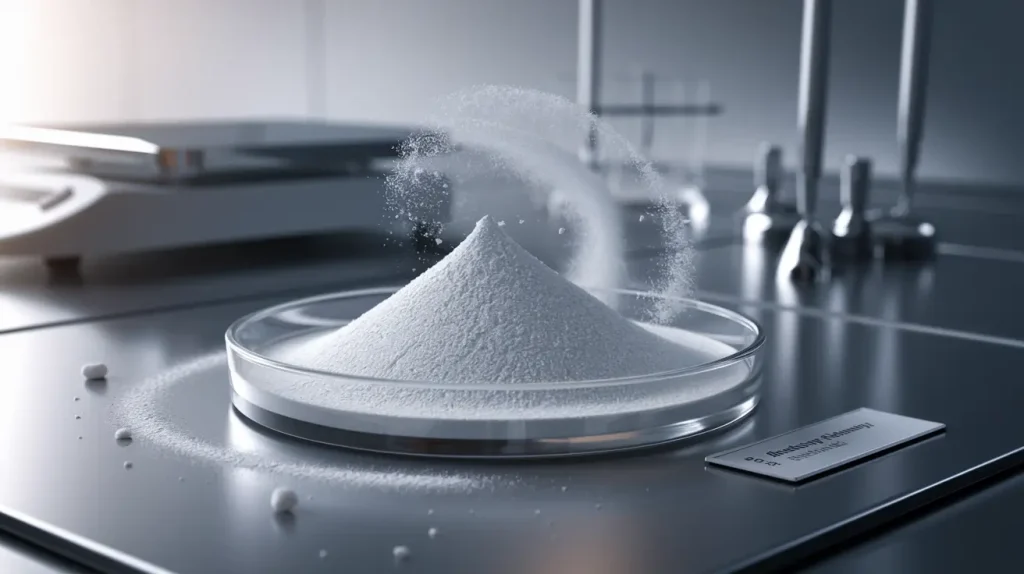
الاختبار وضمان الجودة
الاختبارات الدقيقة ضرورية لضمان استيفاء HPMC لمعايير الأداء الصارمة. تُثبت البروتوكولات الشائعة، مثل تحليل التجلط الحراري، واختبار معدل الذوبان، وتقييمات المعادن الثقيلة، نقاءَ وفعاليةَ المنتج. يُطبّق كبار المصنّعين أنظمة ضمان جودة دقيقة للحفاظ على اتساق كل دفعة على حدة، مما يُقدّم منتجًا يُمكن للعملاء الاعتماد عليه دائمًا. هذا الالتزام بالدقة يُعزّز ثقة وسمعة كبار مُصنّعي HPMC في الأسواق التنافسية. هل ترغب في معرفة كيف تُترجم هذه الممارسات إلى موثوقية حقيقية؟ دعونا نُلقي نظرةً عن كثب.
الاتجاهات المستقبلية في صناعة HPMC
الابتكارات في الأفق
صناعة هيدروكسي بروبيل ميثيل السليلوز (HPMC) مهيأة لنموٍّ جذري، مدفوعةً بابتكاراتٍ متطورة. تُوسّع التطبيقات الناشئة، مثل مواد الطباعة ثلاثية الأبعاد، والطلاءات الواقية المتطورة، والبلاستيك القابل للتحلل الحيوي، آفاقَ تنوع هيدروكسي بروبيل ميثيل السليلوز. تُرسّخ هذه التطورات ريادة هيدروكسي بروبيل ميثيل السليلوز كركيزة أساسية في الحلول المستدامة وعالية الأداء. في الوقت نفسه، قد تُعيد التغييرات التنظيمية المتوقعة صياغة معايير الإنتاج، مما يُشكّل تحدياتٍ وفرصًا للمُصنّعين للابتكار والتكيّف. ولكن ماذا يعني هذا للشركات التي تسعى إلى البقاء في الطليعة؟ يكمن الجواب في فهم متطلبات السوق المتغيرة.
التكيف مع متطلبات السوق
مع تطور الصناعات، تتطور توقعات العملاء لحلول مصممة خصيصًا ووظائف متقدمة. تُمكّن التطورات التكنولوجية المصنّعين من تحسين تركيبات HPMC، مما يُلبي الطلب المتزايد على المنتجات الصديقة للبيئة والمُخصصة للتطبيقات. من خلال مواكبة اتجاهات السوق والاستفادة من التقنيات الجديدة، لا يُلبي كبار مُنتجي HPMC متطلبات اليوم فحسب، بل يُمهدون الطريق أيضًا لإنجازات مستقبلية. فكيف يُمكن للشركات إذًا تهيئة نفسها للاستفادة من هذه الاتجاهات؟ دعونا نستكشف رؤى عملية.
الاستنتاج: اختيار الشركة المصنعة المناسبة لـ HPMC
ملخص للعوامل الحاسمة التي تميز أفضل الشركات المصنعة
يُعد اختيار المُصنِّع المناسب لهيدروكسي بروبيل ميثيل السليلوز (HPMC) قرارًا استراتيجيًا يؤثر على الجودة والكفاءة والنجاح على المدى الطويل. تتميز أفضل المُصنِّعين بقدرات إنتاجية متقدمة، وتلتزم بمعايير جودة صارمة، وتُحفِّز الابتكار من خلال البحث والتطوير. كما أن التزامهم بالاستدامة يُرسِّخ مكانتهم كرائدين في هذه الصناعة. ولكن كيف يُمكنك اتخاذ القرار الأنسب؟ يبدأ ذلك بإعطاء الأولوية للقيم الصحيحة.
التشجيع على إعطاء الأولوية للجودة والاستدامة والابتكار في اختيار الموردين
يجب أن تكون الجودة والاستدامة والابتكار في صدارة عملية اتخاذ القرار. هذه السمات لا تضمن أداءً متفوقًا للمنتج فحسب، بل تتوافق أيضًا مع معايير الصناعة المتطورة والأولويات البيئية. الاستثمار في مُصنِّع يُقدِّر هذه المبادئ يُحقق نتائج متسقة ويعزز ميزة تنافسية في عملياتك. السؤال هو: هل أنت مستعد للخطوة التالية؟
دعوة للعمل: تواصل مع موردي HPMC الموثوق بهم لتلبية احتياجات صناعتك
في مورتون، نتخصص في إنتاج هيدروكسي بروبيل ميثيل سلولوز عالي الجودة، مصمم خصيصًا لتلبية الاحتياجات المحددة لمختلف الصناعات. بفضل مرافق الإنتاج المتطورة، والحلول القابلة للتخصيص، والتزامنا الراسخ بالاستدامة، نساعد عملاءنا على تحقيق أهدافهم بثقة. تواصل معنا اليوم لتكتشف كيف يمكن لمورتون أن تكون شريكك في النجاح. لنبنِ معًا مستقبلًا أقوى وأكثر ابتكارًا.
قسم الأسئلة الشائعة: رؤى شاملة حول HPMC
ما هي التطبيقات الأساسية لـ HPMC؟
هيدروكسي بروبيل ميثيل سلولوز (HPMC) هو بوليمر متعدد الوظائف يُستخدم على نطاق واسع في مختلف الصناعات. ففي قطاع البناء، يُحسّن احتباس الماء وقابلية التشغيل. وفي الصناعات الدوائية والغذائية، يُستخدم كمثبّت ومادة رابطة ومُشكّل للأغشية. أما في الاستخدامات الصناعية، فيُستخدم كمكثّف وعامل طلاء.
كيف يمكنني التعرف على الشركة المصنعة HPMC الموثوقة؟
اختر موردين حاصلين على شهادات مثل ISO أو GMP، وشهادات عملاء قوية، ودعم فني شامل. يضمن المُصنِّع الموثوق الشفافية في توريد المواد الخام وممارسات ضمان الجودة.
ما الذي يحدد تكلفة HPMC؟
يعتمد تسعير HPMC على عوامل مثل توفر المواد الخام، والطلب في السوق العالمية، والاتجاهات الاقتصادية. يقدم الموردون ذوو السمعة الطيبة أسعارًا تنافسية مع الحفاظ على جودة ثابتة لتقديم قيمة مضافة.
لماذا يعد حجم الجسيمات أمرًا بالغ الأهمية في منتجات HPMC؟
يضمن حجم الجسيمات المتناسق توزيعًا موحدًا في التركيبات، مما يُحسّن الأداء في تطبيقات مثل ملاط الأسمنت أو الأقراص الصيدلانية. يُقدّم المصنّعون الذين يتحكمون بدقة في حجم الجسيمات منتجات عالية الجودة وموثوقة.
هل من الممكن تخصيص HPMC لاستخدامات محددة؟
نعم، يمكن لكبار المصنّعين تعديل خصائص مثل محتوى الميثوكسيل والهيدروكسي بروبيل لتلبية المتطلبات الخاصة. يدعم HPMC المُخصّص تطبيقات متخصصة، بما في ذلك الأدوية ذات الإطلاق المُتحكّم والطلاءات الغذائية المتينة.
ما هي ممارسات الاستدامة السائدة بين منتجي HPMC؟
تتبنى الشركات المصنعة الرائدة ممارسات صديقة للبيئة، مثل استخدام المواد الخام المتجددة وتحسين الإنتاج لتقليل النفايات. تتوافق هذه الأساليب مع المعايير البيئية العالمية وتجذب العملاء المهتمين بالبيئة.
ما هي أحدث الاتجاهات في سوق HPMC؟
تكتسب التطبيقات المبتكرة، مثل الطباعة ثلاثية الأبعاد، والبلاستيك القابل للتحلل الحيوي، والطلاءات عالية الأداء، زخمًا متزايدًا. كما تُسهم التغييرات التنظيمية والطلب المتزايد على الحلول المستدامة في دفع عجلة التقدم في هذا المجال.
كيف يعمل HPMC على تعزيز مواد البناء؟
يُحسّن HPMC مواد البناء، مثل الملاط والمواد اللاصقة والطلاء، من خلال زيادة احتباس الماء واللزوجة وقابلية التشغيل. تؤدي هذه التحسينات إلى روابط أقوى، وتقليل التشققات، وزيادة المتانة.
هل HPMC آمن للاستخدام في الأغذية والأدوية؟
بالتأكيد. تلتزم HPMC، المخصصة للأغراض الغذائية والدوائية، بمعايير سلامة صارمة. تُستخدم على نطاق واسع كمثبِّت ومستحلب ومُشكِّل للأغشية في الأقراص والكبسولات والأطعمة المُصنَّعة.
أين يمكنني الحصول على HPMC عالي الجودة؟
تقدم مورتون HPMC عالية الجودة بتركيبات قابلة للتخصيص تناسب مختلف الصناعات. تضمن منشآتنا المتطورة وممارساتنا الإنتاجية المستدامة توريدًا موثوقًا وأداءً ثابتًا للمنتج. تواصل معنا اليوم لاستكشاف حلول مصممة خصيصًا لتلبية احتياجاتك الخاصة.


